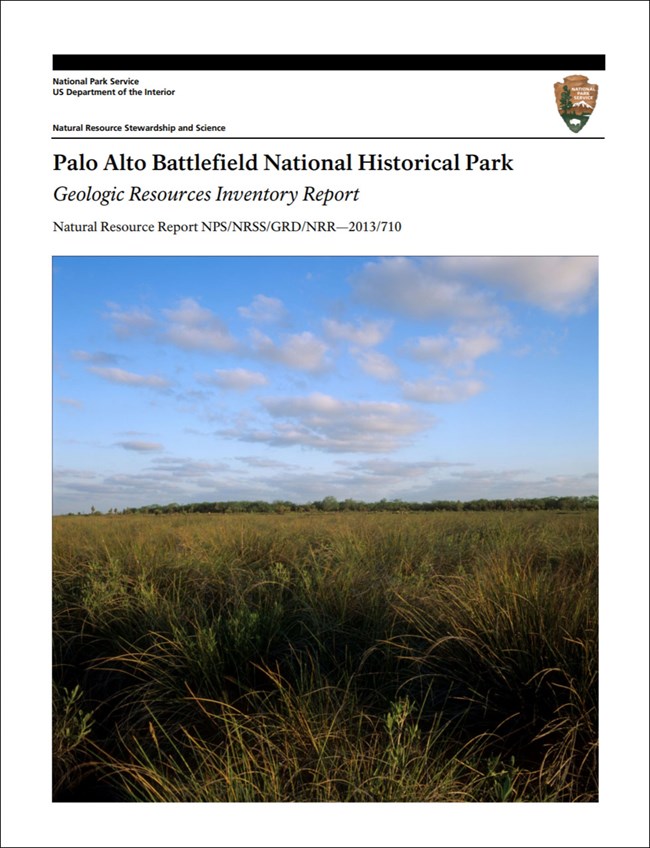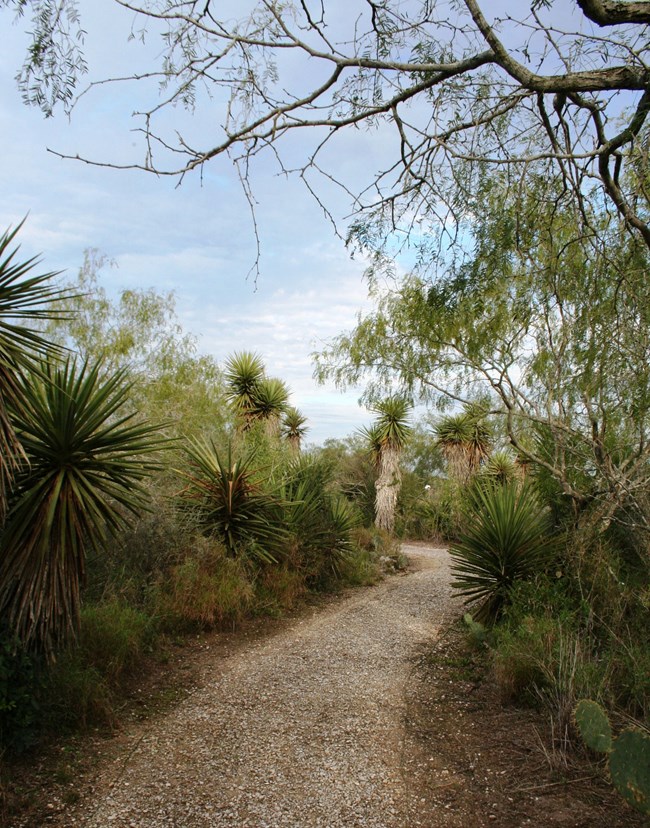Last updated: July 15, 2024
Article
NPS Geodiversity Atlas—Palo Alto Battlefield National Historical Park, Texas
Geodiversity refers to the full variety of natural geologic (rocks, minerals, sediments, fossils, landforms, and physical processes) and soil resources and processes that occur in the park. A product of the Geologic Resources Inventory, the NPS Geodiversity Atlas delivers information in support of education, Geoconservation, and integrated management of living (biotic) and non-living (abiotic) components of the ecosystem.

Introduction
Palo Alto Battlefield National Historical Park (PAAL) is located near the U.S.–Mexico border just north of downtown Brownsville in Cameron County, Texas. Originally authorized as Palo Alto Battlefield National Historical Site on November 10, 1978, the park unit was redesignated a national historical park on March 30, 2009. Encompassing approximately 1,392 hectares (3,442 acres), PAAL consists of two individual units (Palo Alto Battlefield and Resaca de la Palma Battlefield) that commemorate the first two battle sites of the U.S.-Mexican War (1846–1848). The opening battles of Palo Alto and Resaca de la Palma were fought over territorial disputes between the United States and Mexico, and pitted American troops led by General Zachary Taylor against Mexican forces commanded by General Mariano Arista. The U.S.-Mexican War was heavily impacted by the emerging concept of “manifest destiny”, a cultural belief that the expansion of the United States throughout North America was both justified and inevitable (Thornberry-Ehrlich 2013). The war ended with the signing of the Treaty of Guadalupe Hidalgo, wherein Mexico ceded its northern territory and expanded the United States west to the Pacific Ocean. The historic battlefield sites of PAAL represent lasting symbols of a war that shaped two neighboring countries and provide important interpretive perspectives related to the military conflict, its related political, diplomatic, and social causes, and its lasting consequences (National Park Service 2013).
Geologic Setting
Palo Alto Battlefield National Historical Park is situated in the Coastal Plain physiographic province of southeast Texas, a geologically young region comprised of gently sloping Cenozoic sedimentary deposits. The geologic history of PAAL is intricately associated with the formation and development of the Rio Grande, which has evolved dramatically over the last 8 million years to create a broad, meandering floodplain featuring abandoned channels (“resacas” or oxbow lakes), terraces, and levees (Repasch et al. 2017). The oldest strata mapped within PAAL are Quaternary deposits associated with abandoned river channels of the ancestral Rio Grande (Page et al. 2005). Several oxbow lakes occur within and near the Palo Alto Unit of PAAL and are filled with Pleistocene and Holocene mud and plant debris. Adjacent to the oxbow lakes are younger Holocene distributary sand and silt deposits as well as flood-basin muds and clays that grade into interdistributary muds. Underlying the Resaca de la Palma Unit of PAAL are Holocene meander belt deposits of the ancestral Resaca de la Palma that predominantly consist of sandy point bars, silty levees and splays, and mud-filled oxbow lakes.
Regional Geology
Palo Alto Battlefield National Historic site is a part of the Coastal Plain Physiographic Province and shares its geologic history and some characteristic geologic formations with a region that extends well beyond park boundaries.
- Scoping summaries are records of scoping meetings where NPS staff and local geologists determined the park’s geologic mapping plan and what content should be included in the report.
- Digital geologic maps include files for viewing in GIS software, a guide to using the data, and a document with ancillary map information. Newer products also include data viewable in Google Earth and online map services.
- Reports use the maps to discuss the park’s setting and significance, notable geologic features and processes, geologic resource management issues, and geologic history.
- Posters are a static view of the GIS data in PDF format. Newer posters include aerial imagery or shaded relief and other park information. They are also included with the reports.
- Projects list basic information about the program and all products available for a park.
Source: NPS DataStore Saved Search 3139. To search for additional information, visit the NPS DataStore.
A NPS Soil Resources Inventory project has been completed for Palo Alto Battlefield National Historic Site and can be found on the NPS Data Store.
Source: NPS DataStore Saved Search 3090. To search for additional information, visit the NPS DataStore.

Related Links
Related Articles
Palo Alto Battlefield National Historical Park
National Park Service Geodiversity Atlas
The servicewide Geodiversity Atlas provides information on geoheritage and geodiversity resources and values within the National Park System. This information supports science-based geoconservation and interpretation in the NPS, as well as STEM education in schools, museums, and field camps. The NPS Geologic Resources Division and many parks work with National and International geoconservation communities to ensure that NPS abiotic resources are managed using the highest standards and best practices available.

